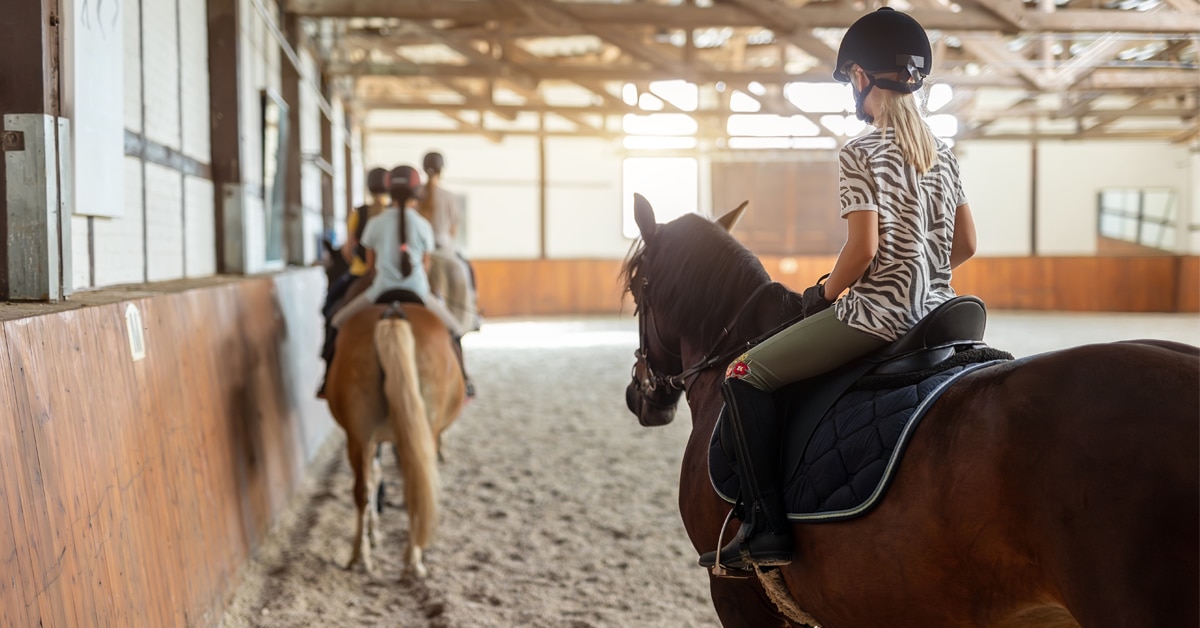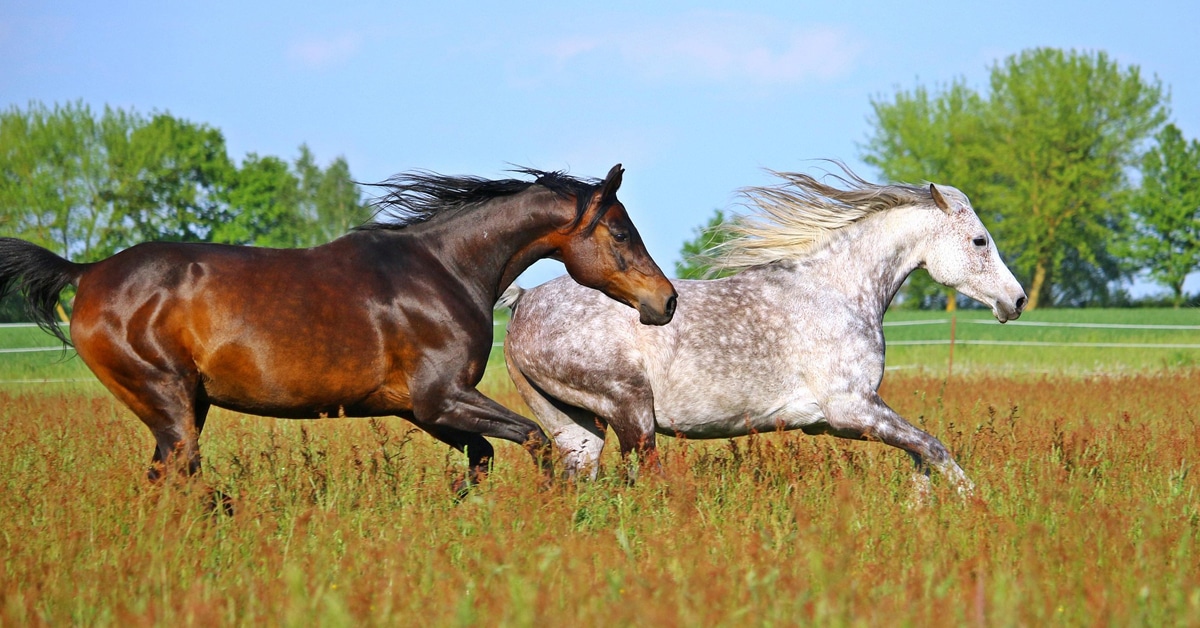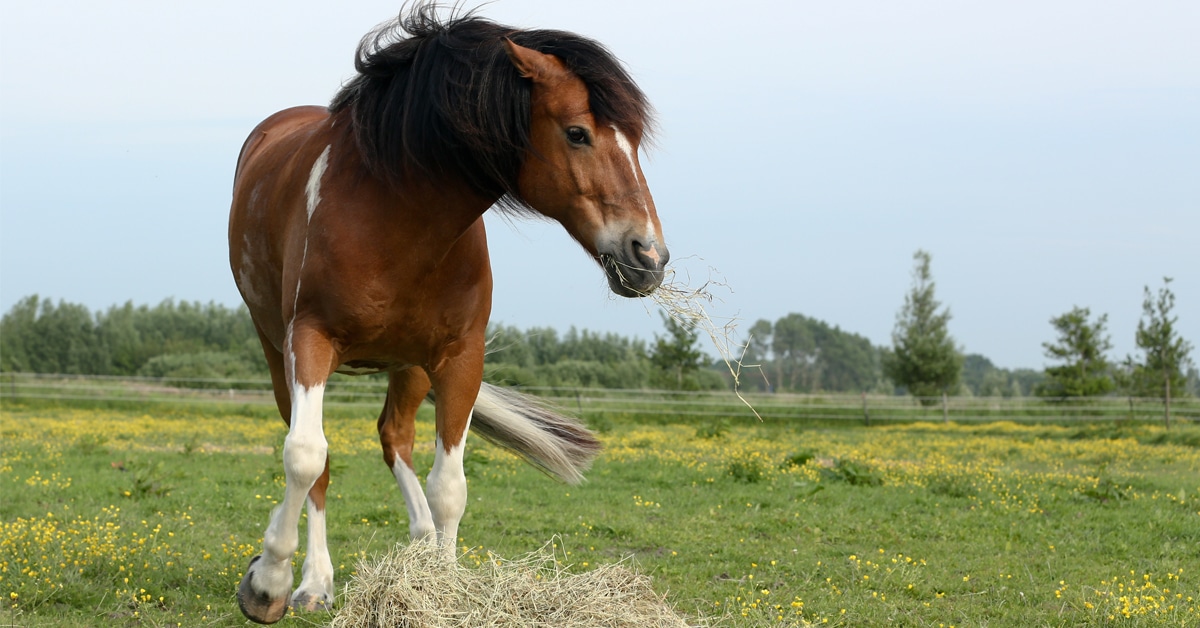A new study has found that the use of haynets can influence the neck and cervical vertebrae of the horse, and found minimal changes in the axial skeleton of the horse due to haynet use.
Although haynets are often used to reduce hay waste, the physiological impacts of haynet use hasn’t been as widely researched. Researcher Michelle DeBoer, lead author on the study, first became interested in the topic as her PhD advisor at the University of Wisconsin – River Falls did research on hay feeders and haynets.
At events she went to, DeBoer found that horse owners still had a lot of questions about how haynet use impacted horses: “’What about their teeth? What about their back and muscles and all of that,’” DeBoer said. That inspired their most recent study, which was funded in part by Hay Chix, a Texas-based manufacturer of slow-feed haynets, and published in 2025 in the Journal of Equine Veterinary Science, to try and “get some answers for the community.”
A two-year study
The study was conducted over the course of two years. A group of 13 horses at the university was used; all of them had access to a round bale in a poly ring feeder. Half of the horses used haynets in the feeder and half used no haynets for a year, before switching for the second year.
The researchers looked at various things including dental health, body weight, body condition score, and hay intake – all of which they’d explored in a previous study as well. In this study, they also looked at the horse’s axial skeletons, using a chiropractor to assess whether there was any misalignment in vertebrae, and how severe it was.
Horses that are using haynets might have to grab or take hold of the hay differently, DeBoer said. “So does that impact their bones and their muscles?”
Results – and what horse owners need to know
Ultimately, the main difference the researchers noted was in the cervical vertebra in the neck. With haynet use, they found an 8% increase in subluxations (which is when a joint becomes misaligned or partially dislocated) compared to horses on the control treatment who didn’t use haynets.
They also found a difference in the cervical range of motion, which DeBoer said she didn’t expect.
“The horses who were on the haynet had better range of motion for chin to chest and chin to fetlock,” DeBoer said. “Where we saw more subluxations, we also saw an increased range of motion.”
That result was a little bit opposing, DeBoer said. “We saw some benefits and we saw some [things] that were not as ideal for those horses. So a little bit of a trade-off.”
They didn’t find any difference for the thoracic vertebra, which support the rib cage; the lumbar vertebra, which are in the loin area; or the TMJ (temporomandibular joint in the jaw).
Another observation that was interesting, DeBoer said, is that regardless of the treatment the horses were on, their range of motion and pain pressure thresholds did change over time.
Horses received a chiropractic adjustment at zero weeks, were measured at four, eight, and 12 weeks, and then received another adjustment at 12 weeks. “Over that time, we did see kind of a decrease in the range of motion, [decreased] pain pressure thresholds that we don’t want to see,” DeBoer said.
DeBoer said that result suggests that “chiropractic in general has its benefits,” whether or not horses are on haynets.
But there are many variables that could influence that, DeBoer said. The horses in this study weren’t in any work during the two years the research was completed, so a change in work could be a variable. “If haynets have the ability to make those minor changes, then how they’re being ridden, or the level of work they’re in, might influence those values as well,” DeBoer said.
Overall, the benefits of the haynets at reducing hay waste don’t seem to come at the cost of damage to dental health. The use of hay nets can also be beneficial in helping to control body weight and body condition score.
“Just be aware that [using haynets] does, based on this research, have the ability to influence the axial skeleton,” DeBoer said. Again, some of the changes were positive and some were not so positive.
“I might be more cognizant of getting a more timely chiropractic treatment for horses who are consuming hay out of haynets,” DeBoer said. “The results kind of showed every horse benefited from it, [so] maybe we need to have more frequent adjustments for haynet horses.”
The Latest










